Anzin-Miura - Samurai-Englishman (part 3)
And let no one wait
No laurels, no rewards
But know, the day will come -
From equal wait
You are a wise judgment
And weigh it with indifference
He is your feat then.
(“The burden of whites”, R. Kipling, M. Froman)
The life of Adams was in the meantime. Years from 1614 to 1619 passed for him in a long voyage to the shores of Siam. On a trip, Adams filled out a logbook, making his observations there. The journal that survived to the present times was transferred to Oxford, to the Bodleian library. Journal entries are placed on 79 sheets of fine rice paper. On them, Adams recorded everything that happened around. There were drawings made with a few mean touches, but they also carried their cognitive function.
The first voyage (unfortunately, did not meet expectations), nevertheless, bore fruit, and in the literal sense of the word, in a completely unexpected area for Adams. Having landed on one of the islands of the Ryukyu, Willi dug up some edible tuber there, the taste is sweeter, and larger in size than the potato, which the Europeans dug out much earlier in North America. The strange fruits turned out to be edible, nutritious and very pleasant to the taste. Several tubers, taken as an experimental planting material, sailed by ship to Japan, where they were brought and planted in a garden at a British trade settlement in Hirado. The Japanese climate was favorable for the "guests" from the island of Ryukyu, and the tubers gave a good harvest. This is how an exotic fruit with the strange name “sweet potato” found its place in Japan, was gratefully accepted by local residents, and so caught on, that to this day very few people remember where it came from, firmly believing that it is exclusively local culture.
Years passed, and Adams’s patron Tokugawa Ieyasu was growing old. After Ieyasu retired to another world, his son Hidetada, who treated Europeans differently than his father, became a shogun. He had no friendly feelings for Adams either, since he was jealous of his father and considered him the main competitor in his influence on Ieyasu. Another circumstance did not give rest to the newly-made shogun - religion. Hidetad was more brutal and intolerant to the dominance of alien religious trends in Japan than his father. Catholics, in fact, like all Christians, he hated, which is why he was so suspicious and incredulous. For all his dislike for Adams, Hideadad didn’t take a piece of land granted to Ieyasu, leaving him in Will’s property.
Meanwhile, the terms of the contract came to an end, and at first Adams decided to terminate business relations with the East India Company. Under an agreement with a company concluded by 24 in December 1613, he was given a service life of two years, but after this period Adams did not leave his service and continued to work further for the benefit of the company, although no one offered him to extend the contract.
Some time passed and the working conditions began to deteriorate, and Adams was less and less satisfied. As a result, he was forced to leave the company, refusing to work in such circumstances. And then his position in society also became unsteady. Hidetada announced publicly that the British would not receive privileges more than those relied upon by other foreign nationals in Japan, and restricted the territory of English trade to Hirado’s port only. Well, then the trouble fell as if from a bag. Adams received a message from the shogun’s advisors that Hidetad was unwilling to respond to the English monarch’s message, citing the fact that the letter was addressed to Ieyasu, who had already died by that time. Adams with dignity passed this dark streak of bad luck. True Japanese qualities helped him cope with them: stoicism, perseverance, composure, ability to keep calm in any situation. He remained at court, setting a goal for himself to persuade the shogun: if it is absolutely impossible for the English to allow unlimited trade, then at least let them have only two permits for trade (goven): the first is for trade in Siam, the second is in Cochinchin. As a result, Adams's assertiveness bore fruit, and Hidetada graciously allowed two such permits to be issued. We must pay tribute to the prudence of Hidetada, who kept the rank of Japanese dignitary for Adams, and therefore he could conduct trade operations without restrictions. Because of this, Adams personally selected and purchased goods throughout Japan, sold it, and sometimes, doing a good deed on the old friendship to his former companions, delivered batches of goods to the East India Company and sold them as his own.
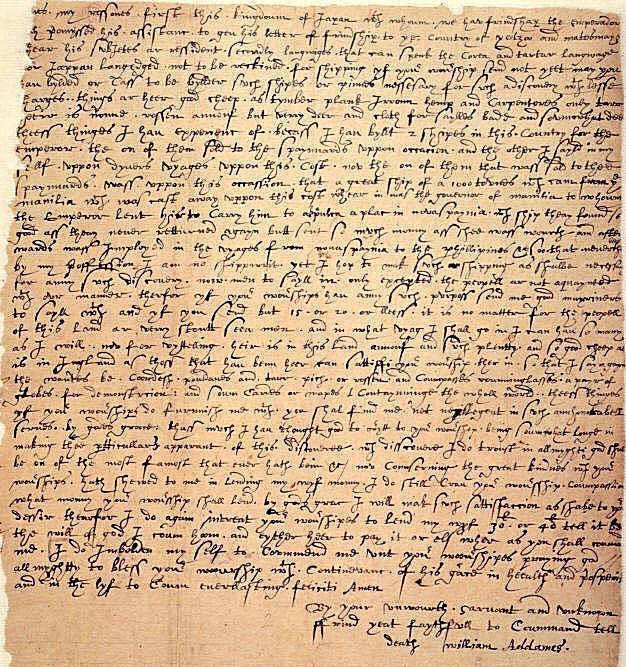
Surprisingly, story even kept Will Adams' letters home for us.
From the account books that Richard Cox led and filled in Hirado, it becomes clear that from December 1617 to March 1618, Willi provided the Company with considerable assistance in the sale of its products throughout Japan; and also collected debts for the Company in Kyoto and other cities and towns. It is worth noting that William Adams often had to take a lot of risk in order to help the trade settlement in Hirado. For example, at the end of 1617, using his personal connections with the governor of the Japanese city of Sakai, he managed to get permission to purchase a large lot. weapons and equipment with the subsequent shipment to Siam by the East India Company. Similar deals with the purchase of weapons were not new, extremely profitable, but at the same time too dangerous because the shogun categorically banned the export of weapons and ammunition from the country.
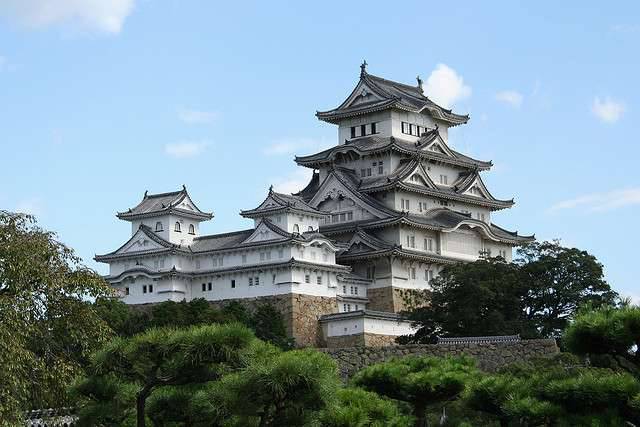
Of course, Will lost his homeland, but he saw something that Europeans never dreamed of. Himeji Castle.
And although Hidetad was a practical man and not believing in all sorts of stories and prejudices, one case forced him to return to Adams. Let the shogun not have any heartfelt feelings for Adams, he still retained a reverent respect for the former attorney of his father. While Adams was waiting at the court for a response to another request for permission to leave, it was dark. The shogun admired the sunset, and then a comet drew the sky over Tokyo. It threw Hodat into such an indescribable horror that he summoned Adams to himself and demanded to interpret the significance of this phenomenon. Adams explained that the comet has always been considered the herald of wars, but the shogun does not have to worry because the war will break out in Europe without in any way capturing small Japan. (Unbelievable, but a fact: in the same year 1618, Europe really was caught up in the fire of the Thirty Years War!)
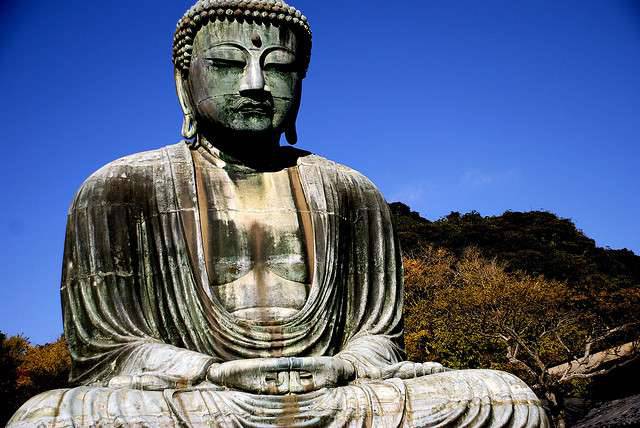
He saw this statue of Buddha ...
During this unexpected meeting, Adams tried to reestablish relations with Khodat, but, alas, the shogun did not need his advice anymore and never again used the services of Adams as an adviser. Unfortunately, the times when the British had an enormous prestige at the imperial court were a thing of the past.
In the spring of 1619, three months after his audience with Hoadad, Adams set sail, as it turned out, the last in his life. Upon returning from a trip, Willie, feeling not very healthy, got into bed. The disease did not let go. Anticipating a quick demise, Adams summoned two employees of a commercial settlement, asked them to do his will after death. In the testament, which Adams nevertheless composed himself and signed with his own hand, it was stated: first, to bring the body to earth in its homeland, that is, in England. Secondly, Willie bequeathed to divide all his savings made in Japan into two equal parts. He will bequeath the first part to his wife and daughters living in England, the second part to the children of Joseph and Susan, who are in Japan.
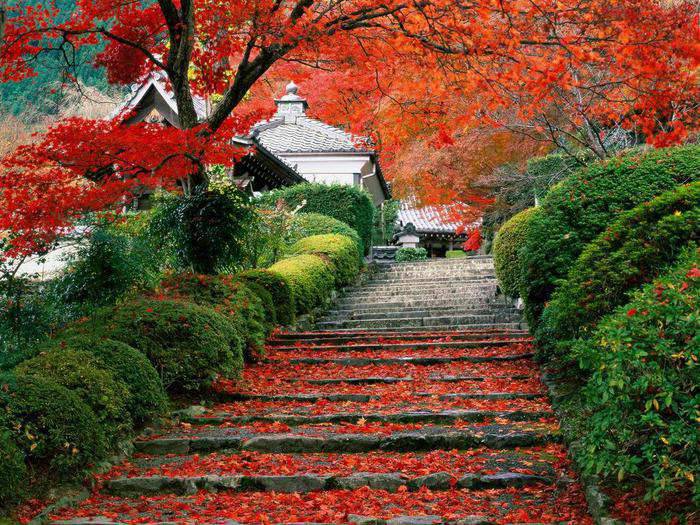
And autumn foliage in which Japanese temples were buried ...
When he gave orders on property in his will, Adams asked them to distribute all of them to his numerous friends and relatives who live in Japan and in England. So, to the settlement leader Richard Cox was written off an amazingly beautiful long sword, granted once by the shogun Ieyasu Adams as a samurai. Maps, lots and an astronomical globe were also bequeathed to Richard. Assistant Richard Eaton Adams bequeathed books and navigation equipment. John Ostervik, Richard King, Abraham Smath and Richard Hudson, who, in fact, became nurses for the patient, inherited the most expensive silk kimonos. The servants were not forgotten either. For the long irreproachable service, because he faithfully served his master, the servant Anthony received his freedom and in addition some money, which would be of little help in a new life. The faithful maid Jugasa also received some money and clothes. And the most iconic, important and especially revered things Adams bequeathed to his own son, Joseph. It was a unique collection of combat swords that Adams cherished.
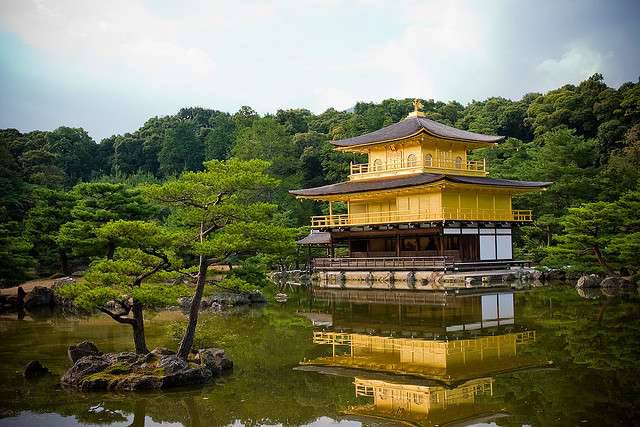
... And this Golden Pavilion.
A week after Adams died, by fulfilling his will, Cox and Eton described all his movable property. Approximate amount of property valuation was pounds sterling 500 - an impressive amount at that time. In addition to movable property, Adams was the owner of the estate in Khemi, large plots of land, was the owner of several houses in Edo, and in some other parts of Japan. Undoubtedly, Adams was a very wealthy and practical man, he ordered all of his income wisely, investing them in a profitable enterprise.
Cox and Eaton honestly fulfilled everything that was written in the will. Adams’s British wife was sent a certain amount of money, which was due to her as a legitimate share in the inheritance of the spouse. Cox also worried about the daughter of Mrs. Adams and ordered to divide the money equally. 13 December 1620, a letter was sent to the East India Company in which Cox explains the reason for this section of cash. The fact is that Adams simply did not want his English spouse to receive one whole inheritance. His child would then be left with nothing. To avoid this, Adams decided to hedge his daughter and ordered to divide into two equal parts the property due.
Subsequently, it became known that in addition to movable and immovable property in Japan, Adams had a small property in Britain. In assessing the value of the property amounted to 165 pounds. October 8 1621, Mrs. Adams became the legal heiress of this property.
Yes, Mrs. Adams was not deprived of her inheritance. When Adams was alive, he, having established a stable relationship with Britain, constantly remembered his wife and daughter. Adams regularly sent them money through the East India Company. So, in May, 1614, Mrs. Adams, through the Company, received 20 pounds, sent by her spouse.
The Board of the East India Company, after Adams’s death, assigned a permanent monetary compensation to the widow of Adams, and also set her annual pension in the amount of 5 pounds. During his lifetime, Adams always reimbursed the Company for expenses that were spent on him: sometimes money was deducted from the money earned, which was paid to him in Japan, and from time to time he sent help to his relatives through the London branch of the Company.
It is not known whether Mrs. Adams was aware that her husband had a wife in Japan too. Mary Adams acted wisely: even if the pay was small, but it was in no way superfluous. Money was accepted according to the principle: “from a black sheep, even a tuft of wool”. It is a pity that there was no information that would confirm that Mrs. Adams knows something about his other family.
How was the life of both wives of Will Adams, located on opposite sides of the globe, very little information. Perhaps Mrs. Adams got married again, a couple of records found in the parish book of St. Daston’s Church in Stepney, dated 1627 and 1629 for years, testify to this. Both are supposed to refer to Mrs. Adams. A record made in 20 May 1627, reports that Mary Adams, a widow, was married to the baker John Eckhad. The next entry says that 30 on April 1629, too, Mary Adams, also a widow, was legally married to Henry Lynes, a sailor from Ratcliffe. Nothing is known about the further fate of Adams' daughter - Deliverens. The only source of information was the mention of her name in the minutes of the East India Company meeting of August 13 of 1624. The minutes stated that William Adams’s heiress, Deliverens, had sent a petition to the leadership of the East India Company, bustling about his father’s property. This is all that has been found in the archives of Deliverens.
As the fate of the Japanese wife Adams and her two children, there is extremely little information. Hidetad has officially confirmed the property right of Adams Joseph’s son to own a Hemi estate. For Joseph, this house was a resting place, a haven of peace, a quiet haven after long and difficult trips to the sea. Yes, it is true, Joseph chose his father's path, he studied for a long time, became a navigator, almost ten years, from 1624 to 1635, the year he sailed five times to the shores of Cochinchina and Siam. The last mention of Adams' son is found in 1636. Then Joseph placed a gravestone at his parents in Khemi, presumably on the anniversary of their death. About Susana, the Japanese daughter of Adams, there is only one entry made by Captain Cox in her diary, which said that 1 February 1622 of the year she was presented with a taffeta cut. And nothing more ...
Well, as for the Japanese wife Adams Magome, she died in August 1634 of the year and found solace in the cemetery in Hemi, next to Adams. It is possible that the remains of Adams were transported from Hirado to Hemi before her death, because two tombstones were installed on the grave, and after decades, in the 1798 year, two stone lanterns were also installed. Following the customs of the Buddhists, William Adams, after his death, began to bear the name of Juro-manin Genji-koji, and Magome - Kayka-oin Meuman-biku. In memory of the couple in the Jodoji Temple near Hamilstal, incense is constantly burned. But time takes its toll, the graves were dilapidated, were abandoned and not groomed, until finally, in the 1872 year, they were not stumbled upon by the English merchant James Walter. With the help of the Japanese and the English, who then lived in Japan and took up the noble cause together, the graves and monuments were brought into shape. In 1905, the money collected by the public was used to buy out the cemetery's territory, and a pretty park soon turned green: the trees began to rustle with leaves, and the flowers were grateful. The superintendent was put in charge of the graves, who had to watch them most carefully.
In 1918, a stone pillar 10 feet high was erected in the same place in the park. The festive ceremony was held on 30 in May of the same year. On the pillar carved an inscription in Japanese, which tells about the life of Willie Adams. They said that when he died, he said the following: “While mooring in my wanderings to this land, I lived here until the last minute in peace and prosperity, entirely due to the grace of Shogun Tokugawa. Please bury me on top of a hill in Hemi so that my grave is facing east so I can look to Edo. My spirit from the underworld will protect this beautiful city. ”
No one knows for sure whether Adams uttered these words or not: the diary of Captain Cox keeps silence. But no one denies the existence of such an order. Not for nothing on one side of the memorial column are lines written by a Japanese poet and intended personally to William Adams - the guardian of the city:
“Oh, a navigator who has made a lot of seas to come to us. You adequately served the state and for this you were generously rewarded. Without forgetting about mercies, you in death, as in life, remained the same devotee; and in your grave facing east you always guard Edo. ”
Only a samurai received this honor in Japan, and there is nothing unusual about it. However, the conversation was about a foreigner ... Oddly enough, but William Adams, a true Englishman, became a real samurai. And for the Japanese, it was a high figure!
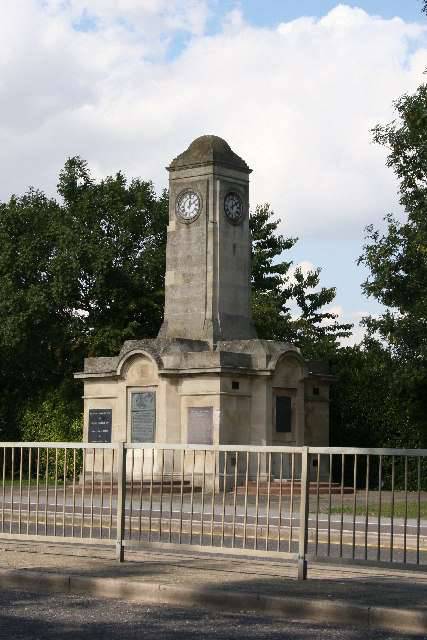
Monument to Will Adams in Gillingham.
And what about the birthplace of Adams, Britain? The great navigator was remembered only in 1934 year and decided to somehow perpetuate the memory of Willie. Then in his native Gillingham, volunteers raised money to build a memorial clock tower on Wetling Street, which is crossed by an old Roman road leading through the entire city and descends to the Medway River, on which William Adams had passed the serene childhood.
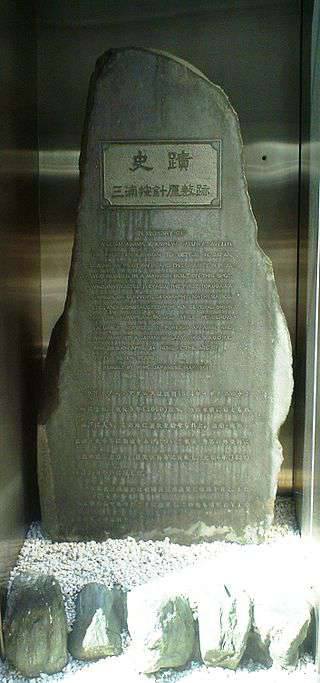
Monument to Adams in Japan.
Two hundred years later American ships fleet sailed to the shores of Japan, and then the British fleet also approached. In 1855, British ships approached the shores of Japan. The meeting between the British and Japanese resulted in the signing of an Anglo-Japanese trade agreement allowing the British to trade in Nagasaki and Hakodate. Over time, the British were allowed to trade throughout the country, and this was a very significant event for the old woman of Britain. Indeed, stable trade with Japan is a matter of honor for Misty Albion!
Information